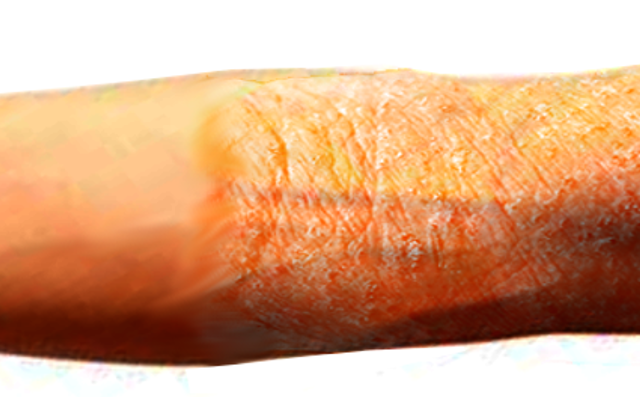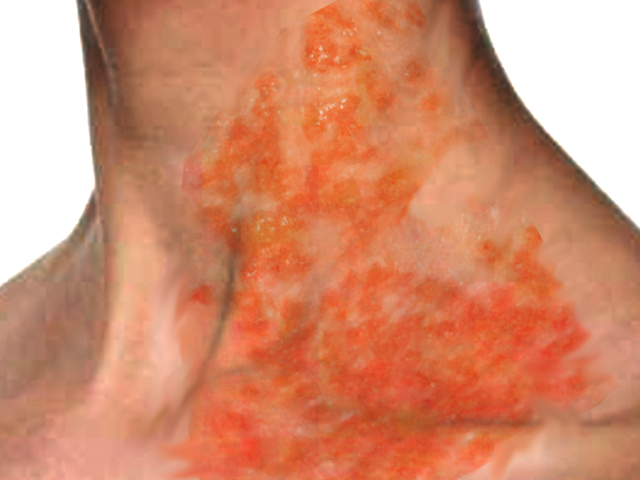[1]
Paller A, Jaworski JC, Simpson EL, Boguniewicz M, Russell JJ, Block JK, Tofte S, Dunn JD, Feldman SR, Clark AR, Schwartz G, Eichenfield LF. Major Comorbidities of Atopic Dermatitis: Beyond Allergic Disorders. American journal of clinical dermatology. 2018 Dec:19(6):821-838. doi: 10.1007/s40257-018-0383-4. Epub
[PubMed PMID: 30168085]
[2]
Giavina-Bianchi M, Giavina-Bianchi P. Systemic Treatment for Severe Atopic Dermatitis. Archivum immunologiae et therapiae experimentalis. 2019 Apr:67(2):69-78. doi: 10.1007/s00005-018-0521-y. Epub 2018 Aug 22
[PubMed PMID: 30159581]
[3]
Drucker AM, Ellis A, Jabbar-Lopez Z, Yiu ZZN, Arents BWM, Burton T, Spuls PI, Küster D, Schmitt J, Flohr C. Systemic immunomodulatory treatments for atopic dermatitis: protocol for a systematic review with network meta-analysis. BMJ open. 2018 Aug 29:8(8):e023061. doi: 10.1136/bmjopen-2018-023061. Epub 2018 Aug 29
[PubMed PMID: 30158235]
Level 1 (high-level) evidence
[4]
Oliveira ADT,Sodré CS,Ferreira DC,Abad ED,Saintive S,Ribeiro M,Cavalcante FS,Piciani B,Gonçalves LS, Oral Aspects Identified in Atopic Dermatitis Patients: A Literature Review. The open dentistry journal. 2018
[PubMed PMID: 29988222]
[5]
Berg AK, Nørgaard K, Thyssen JP, Zachariae C, Hommel E, Rytter K, Svensson J. Skin Problems Associated with Insulin Pumps and Sensors in Adults with Type 1 Diabetes: A Cross-Sectional Study. Diabetes technology & therapeutics. 2018 Jul:20(7):475-482. doi: 10.1089/dia.2018.0088. Epub 2018 Jun 12
[PubMed PMID: 29893593]
Level 2 (mid-level) evidence
[6]
Murota H, Yamaga K, Ono E, Katayama I. Sweat in the pathogenesis of atopic dermatitis. Allergology international : official journal of the Japanese Society of Allergology. 2018 Oct:67(4):455-459. doi: 10.1016/j.alit.2018.06.003. Epub 2018 Aug 3
[PubMed PMID: 30082151]
[7]
Hulshof L, Overbeek SA, Wyllie AL, Chu MLJN, Bogaert D, de Jager W, Knippels LMJ, Sanders EAM, van Aalderen WMC, Garssen J, Van't Land B, Sprikkelman AB, Clinical Study Group. Exploring Immune Development in Infants With Moderate to Severe Atopic Dermatitis. Frontiers in immunology. 2018:9():630. doi: 10.3389/fimmu.2018.00630. Epub 2018 Mar 29
[PubMed PMID: 29966024]
[8]
Sung CT,McGowan MA,Jacob SE, Allergic Contact Dermatitis Evaluation: Strategies for the Preschooler. Current allergy and asthma reports. 2018 Aug 1
[PubMed PMID: 30069607]
[9]
Batmaz SB. Laboratory and severity evaluation of pediatric atopic dermatitis and moisturizer response in different phenotypes. Allergologia et immunopathologia. 2018 Nov-Dec:46(6):571-577. doi: 10.1016/j.aller.2018.03.007. Epub 2018 Jul 4
[PubMed PMID: 29980402]
[10]
Ariëns LFM, Bakker DS, van der Schaft J, Garritsen FM, Thijs JL, de Bruin-Weller MS. Dupilumab in atopic dermatitis: rationale, latest evidence and place in therapy. Therapeutic advances in chronic disease. 2018 Sep:9(9):159-170. doi: 10.1177/2040622318773686. Epub 2018 May 11
[PubMed PMID: 30181845]
Level 3 (low-level) evidence
[11]
Ali Z, Ulrik CS, Agner T, Thomsen SF. Association between Atopic Dermatitis and the Metabolic Syndrome: A Systematic Review. Dermatology (Basel, Switzerland). 2018:234(3-4):79-85. doi: 10.1159/000491593. Epub 2018 Aug 15
[PubMed PMID: 30110673]
Level 1 (high-level) evidence
[12]
Wollenberg A,Barbarot S,Bieber T,Christen-Zaech S,Deleuran M,Fink-Wagner A,Gieler U,Girolomoni G,Lau S,Muraro A,Czarnecka-Operacz M,Schäfer T,Schmid-Grendelmeier P,Simon D,Szalai Z,Szepietowski JC,Taïeb A,Torrelo A,Werfel T,Ring J, Consensus-based European guidelines for treatment of atopic eczema (atopic dermatitis) in adults and children: part II. Journal of the European Academy of Dermatology and Venereology : JEADV. 2018 Jun
[PubMed PMID: 29878606]
Level 3 (low-level) evidence
[13]
Rastogi S, Patel KR, Singam V, Silverberg JI. Allergic contact dermatitis to personal care products and topical medications in adults with atopic dermatitis. Journal of the American Academy of Dermatology. 2018 Dec:79(6):1028-1033.e6. doi: 10.1016/j.jaad.2018.07.017. Epub 2018 Jul 25
[PubMed PMID: 30053491]
[14]
Thomas KS, Bradshaw LE, Sach TH, Cowdell F, Batchelor JM, Lawton S, Harrison EF, Haines RH, Ahmed A, Dean T, Burrows NP, Pollock I, Buckley HK, Williams HC, Llewellyn J, Crang C, Grundy JD, Guiness J, Gribbin A, Wake EV, Mitchell EJ, Brown SJ, Montgomery AA. Randomised controlled trial of silk therapeutic garments for the management of atopic eczema in children: the CLOTHES trial. Health technology assessment (Winchester, England). 2017 Apr:21(16):1-260. doi: 10.3310/hta21160. Epub
[PubMed PMID: 28409557]
Level 1 (high-level) evidence
[15]
Napolitano M,Marasca C,Fabbrocini G,Patruno C, Adult atopic dermatitis: new and emerging therapies. Expert review of clinical pharmacology. 2018 Aug 9
[PubMed PMID: 30073901]


